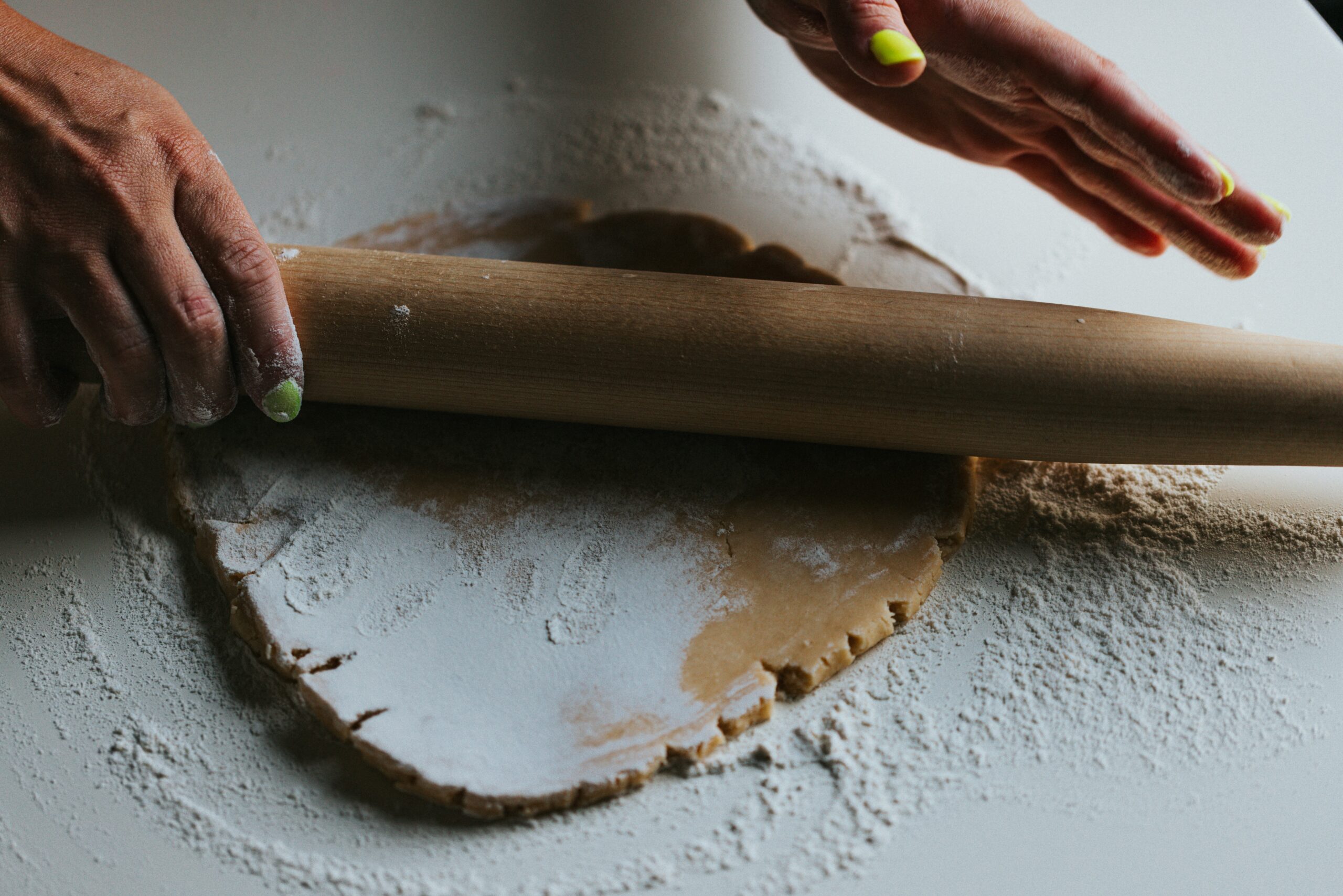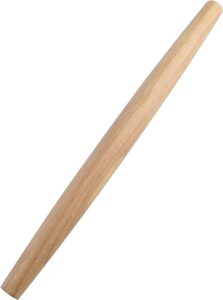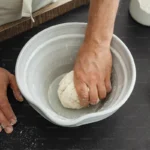Perfect Pastries with a French Rolling Pin: 4 Expert Tips

Table of Contents
How to Use a French Rolling Pin for Perfect Pastry Dough
If you’ve ever tried your hand at baking, you know that rolling out dough can be quite the challenge. A good rolling pin is essential. And while the classic American rolling pin with its handles is a staple in many kitchens, the French rolling pin offers a level of finesse and control that can take your baking to the next level.
Get the Perfect Rolling Pin Now
What Makes the French Rolling Pin Special?
At first glance, a French rolling pin might seem like just a fancy stick, but don’t be fooled by its simplicity. Here are a few features that set it apart:
- Tapered Design: Unlike the cylindrical American pin, the French version tapers at the ends. This shape allows for more precise control over the pressure you apply, making it easier to roll out dough evenly.
- No Handles: While handles might seem convenient, they can actually limit your control. The French rolling pin lets you use your palms and fingers to feel the dough directly, giving you a better sense of its thickness and texture.
- Versatility: The tapered ends make it easier to pivot and maneuver the pin, which is especially handy when working with delicate pastry dough that needs a gentle touch.
Get the Perfect Rolling Pin Now
Exploring the Benefits of Curved French Rolling Pins
French rolling pins come in varied designs, notably straight or curved variations, which influence the results of your baking. Fully curved French rolling pins allow bakers to intuitively apply varied pressure, making it easier to roll out specialized doughs such as puff pastries or pie crusts. These tapered designs also excel in creating more precise shapes and edges, which traditional flat rolling pins struggle with. Alternatively, flat French pins prioritize maintaining consistent thickness over larger dough surfaces. Understanding these design differences can help you choose the best rolling pin for specific recipes.
Rolling with the French Pin: Step-by-Step Guide
Ready to give the French rolling pin a try? Here’s how to make the most of it:
- Prep Your Surface and Dough: Lightly flour your work surface and the rolling pin to prevent sticking. Make sure your dough is chilled – cold dough is easier to roll out and less likely to tear.
- Position Your Pin: Place the rolling pin in the center of the dough. Using your hands, apply gentle pressure and roll outward, moving from the center to the edges. This helps ensure the dough spreads evenly.
- Rotate the Dough: After a few rolls, lift and rotate your dough a quarter turn. This technique helps maintain an even thickness and prevents sticking.
- Adjust Pressure as Needed: Thanks to the tapered design, you can easily adjust the pressure with your palms and fingers. If one area is thicker, apply a bit more pressure; if it’s too thin, ease up.
- Check for Consistency: Use a ruler or a dough guide to check the thickness. For most pastry doughs, you’ll want an even thickness of about 1/8 to 1/4 inch.
Tips for Perfect Pastry Every Time
- Chill Out: Keep your dough cold to avoid sticking and tearing. If it starts to warm up, pop it back in the fridge for a few minutes.
- Use Parchment Paper: Rolling your dough between two sheets of parchment paper can make the process cleaner and easier, especially for sticky doughs.
- Light Touch: Don’t press too hard! Let the weight of the rolling pin do most of the work to avoid overworking the dough, which can make it tough.
- Practice Makes Perfect: The more you use your French rolling pin, the better you’ll get at controlling the pressure and achieving an even roll.
Why Bakers Love It
Many bakers swear by the French rolling pin for its superior control and versatility. It’s especially beloved by those who work with delicate doughs like puff pastry, pie crusts, and tart shells. The direct contact with the dough lets you feel any imperfections and adjust your technique in real time.
Selecting the Right Material for Your French Rolling Pin
The material of your French rolling pin plays a crucial role in performance and durability. Traditionally made from hardwood such as maple or walnut, wooden French rolling pins offer excellent control and even pressure distribution. However, newer materials like marble have gained popularity for their ability to stay cool during use, making them ideal for rolling delicate doughs like puff pastry. Silicone options also suit bakers looking for non-stick features. Choosing the right material not only enhances your technique but also ensures better results for specific types of recipes.
Conclusion
Switching to a French rolling pin might seem like a small change, but it can have a big impact on your baking. With a bit of practice, you’ll find yourself rolling out dough with more precision and confidence, achieving perfect pastry every time. See you next time!
Get the Perfect Rolling Pin Now
Read More:
A Showdown Between Steel and Teflon Pans – Pros, Cons, and Top Picks to Buy in 2023
All you need to know about Blue Diamond cooking set
Flawless Flipping: The Fantastic 4 – Best Non-Stick Frying Pans Under $20
FAQs:
1. What is a French rolling pin?
A French rolling pin is a cylindrical baking tool with tapered ends designed to provide better control and precision for rolling out dough. Unlike traditional rolling pins with handles, its handle-less design lets bakers manipulate pressure more intuitively.
2. How is a French rolling pin different from a traditional rolling pin?
Unlike handled rolling pins, French rolling pins are tapered at the ends and lack handles. This design provides direct control, helps achieve uniform dough thickness, and is particularly effective for delicate pastry doughs.
3. What materials are French rolling pins made of?
French rolling pins are traditionally made from maple, walnut, and cherry hardwood. Marble and silicone versions are also available, offering added benefits like cooling properties or non-stick surfaces.
4. What are the advantages of using a French rolling pin?
The tapered design allows bakers to roll dough evenly, apply precise pressure, and rotate dough easily, making it ideal for pie crusts, laminated pastries, and other recipes requiring delicate handling.
5. How should I choose the best French rolling pin for my kitchen?
Consider the material (e.g., hardwood or marble), weight, and size when purchasing a French rolling pin. Heavier pins are ideal for dense doughs like pie crusts, while lighter ones work well for delicate pastries. The pin’s length should match your baking needs—shorter pins for smaller batches and longer ones for large doughs.
6. Can French rolling pins be used for non-baking tasks?
Yes! French rolling pins are versatile tools and can be used for tenderizing meat, crushing food items (e.g., cookies, crackers, or nuts), and rolling out pasta dough, making them a valuable addition to any kitchen.
[Source: Adapted from common uses of rolling pins]
7. How do I properly clean and maintain my French rolling pin?
Please wash your rolling pin with warm, soapy water and dry it immediately. Avoid soaking it or using a dishwasher, which can lead to warping or cracking. Applying food-safe mineral oil or beeswax occasionally helps maintain its finish and prevents the wood from drying.
8. What are the benefits of tapered ends on a French rolling pin?
The tapered ends allow bakers to roll dough with greater control and precision, create thin-to-thick transitions for laminated doughs like croissants, and easily shape circular or even specialty dough forms.
9. What size French rolling pin should I choose?
French rolling pins typically come in two lengths—12 inches for small batches and 20 inches for larger projects. Choose the size based on your baking needs. If possible, owning both sizes provides flexibility for different recipes.
10. Are marble French rolling pins better than wooden ones?
Marble rolling pins are beneficial because they stay cool during use, making them ideal for rolling delicate doughs prone to sticking, such as puff pastry. However, wooden rolling pins offer better control and are more versatile for general use. The choice depends on your baking preferences.





